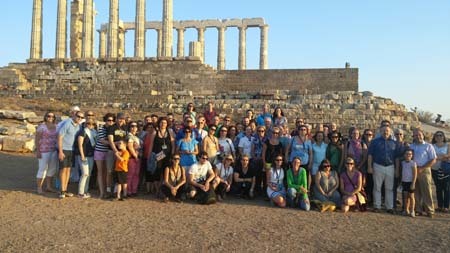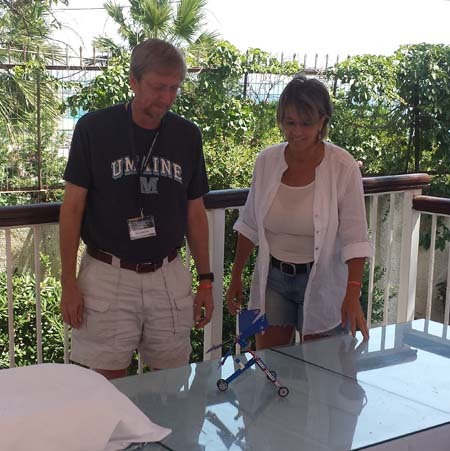
Through the National Science Foundation, twenty physics teachers from across the United States joined 30 of their European counterparts in July in Attica, Greece, for Inspiring Science Education Summer Academy 2015, a six-day training and networking program aimed at boosting inquiry-based learning in high school classrooms. The National Science Foundation funded the trip through the national QuarkNet Program, an education and outreach program that partners high school physics teachers with particle physicists at more than 50 centers across the country.
“This kind of international relationship-building is a big win for QuarkNet teachers and the hundreds of students they serve,” says Mitch Wayne, professor of physics at the University of Notre Dame and one of QuarkNet’s national principal investigators. “It opens access to new resources, new models of learning, and new colleagues and collaborators in the field.”
The teachers learned about eLearning tools, open digital educational resources such as data from CERN, Fermilab, and telescopes around the world, as well as teaching practices including real-world activities and project-based approaches that they can adapt to their own classrooms.
“One of the most useful aspects of this workshop was meeting and sharing ideas with physics teachers from around the United States and Europe in an informal and relaxed setting,” said Randy Hedlund, a physics and biology teacher from Minneapolis. “This broadened my perspective on teaching science. There are many universals in science teaching but quite a few differences in how science is taught around the globe.”

Among other things, the teachers were introduced to the European Commission’s Global Online Science Labs for Inquiry Learning at School (Go-Lab), a European approach to engaging young students in science education.
“It gave me knowledge of an access to a lot more computer tools that we can use in class, some virtual labs,” said Susan Sakimoto, a teacher at Riley High School in South Bend, Ind., who has worked with QuarkNet for three years. “I think it changed attitudes. It gave us a wider viewpoint on how to try to do some of our science lessons.”
“It was wonderful to learn about so many online tools that are available especially for high-energy physics and astronomy,” said Katherine Seguino of Aurora, Ill. “Learning how to build the scenarios and the availability of the vetted e-tools through the ISE portal made the process more streamlined.”
Each teacher was asked to produce a classroom project with the tools and share it with the others. Sakimoto, for example, is creating a project that uses NASA’s global geophysical data sets from Mars to have student investigate evidence for water on the red planet, including polar caps, old flows, and near-surface water.
“I gained valuable experience with unique and effective teaching pedagogies and new technology that is being implemented throughout Europe and the United States in the high school science classroom,” said teacher Tegan Byerly of Caldwell, Idaho. “The exposure to the culture of Greece also provided many learning opportunities that I will take back to my classroom this fall.”
Originally published by at science.nd.edu on August 10, 2015.